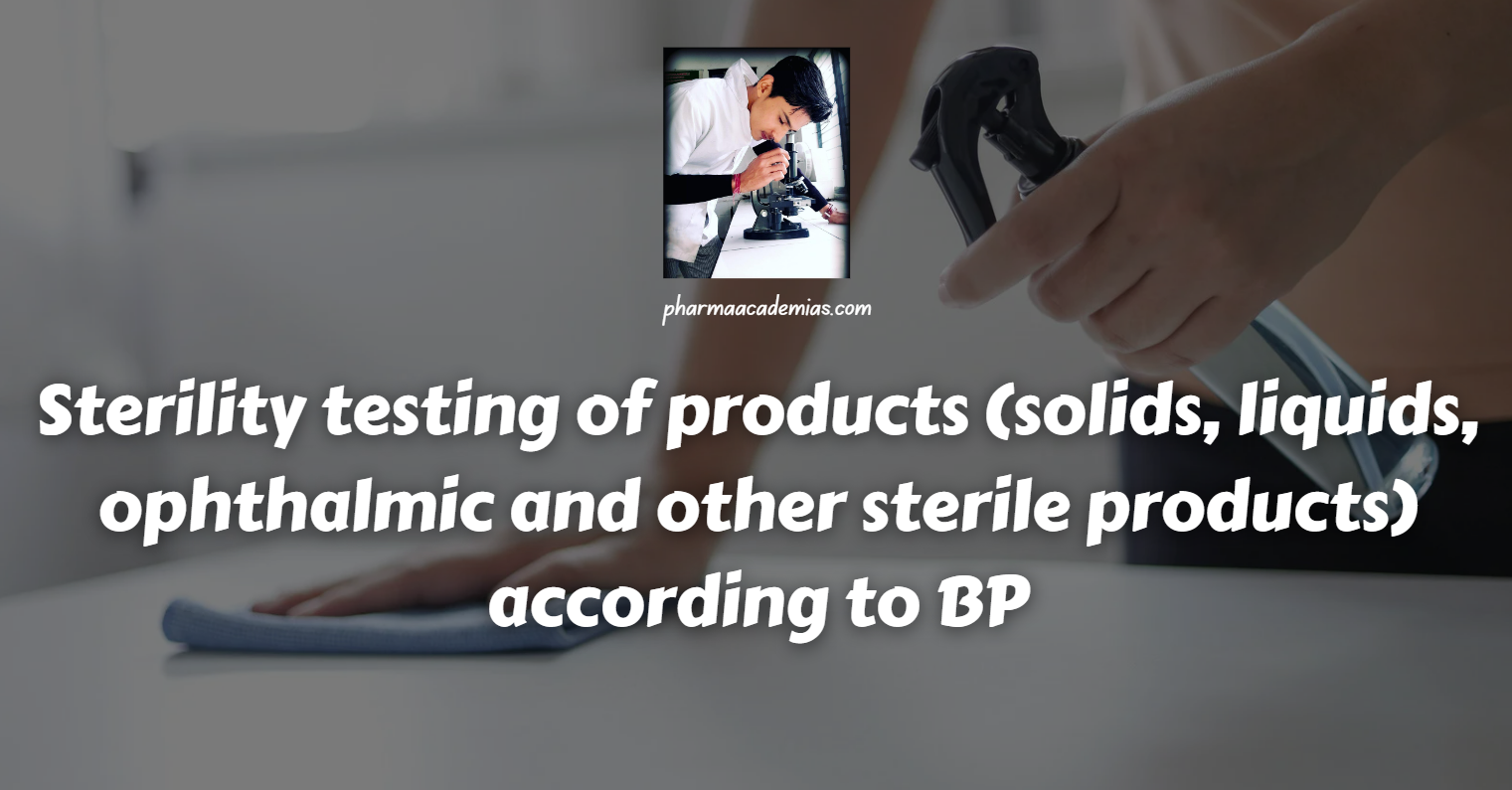The British Pharmacopoeia (BP) provides comprehensive guidelines for sterility testing of pharmaceutical products to ensure that they meet the required standards for sterility. Sterility testing is particularly crucial for sterile pharmaceutical products, including solids, liquids, ophthalmic preparations, and other sterile products. Here’s a detailed note on sterility testing according to the British Pharmacopoeia:
General Principles:
1. Objective of Sterility Testing:
The primary objective is to ensure the absence of viable microorganisms that could compromise the safety and efficacy of sterile pharmaceutical products.
2. Applicability:
Sterility testing applies to products labeled as sterile and those intended for parenteral administration, ophthalmic use, and other sterile routes.
Sterility Testing Procedure:
1. Test Methods:
The BP outlines two primary test methods: direct inoculation and membrane filtration. The choice of method depends on the nature of the product.
2. Test Microorganisms:
Commonly used test microorganisms include Bacillus subtilis and Clostridium sporogenes for direct inoculation, and Pseudomonas aeruginosa and Staphylococcus aureus for membrane filtration.
3. Test Conditions:
Testing is performed under aerobic and anaerobic conditions to detect both aerobic and anaerobic microorganisms. Incubation conditions and duration are specified based on the product type.
4. Validation of Sterility Test:
Validation includes demonstrating the ability of the test to detect microorganisms, the absence of antimicrobial properties in the test system, and the ability to recover microorganisms from the product.
Sterility Testing of Solids:
1. Sample Preparation:
Homogenize or dissolve the solid product in a suitable sterile liquid before testing.
2. Test Procedure:
Researchers perform direct inoculation or membrane filtration based on the characteristics of the product.
3. Incubation:
Incubate at suitable temperatures and durations as specified in the BP.
Sterility Testing of Liquids:
1. Sample Volume:
Researchers determine the volume of the product to be tested based on the nature of the product and the testing method.
2. Test Procedure:
Researchers perform direct inoculation or membrane filtration, ensuring they test the entire volume.
3. Incubation:
Incubate at specified temperatures and durations.
Sterility Testing of Ophthalmic Products:
1. Sample Collection:
Researchers aseptically collect samples from different containers, considering each container as a separate test.
2. Test Procedure:
Direct inoculation is commonly used for ophthalmic products.
3. Incubation:
Incubate at specified temperatures and durations.
Other Sterile Products:
1. Special Considerations:
Specific considerations are provided for products like powders for injections, surgical sutures, and powders for inhalation.
2. Test Methods:
The BP guides on selecting appropriate test methods based on the nature of the product.
Test Acceptance Criteria:
1. Absence of Growth:
The product is considered sterile if there is no growth of microorganisms in the test media.
2. Positive Controls:
Positive controls are included in each test to ensure the suitability of the testing conditions.
Reporting:
1. Test Results:
Results are reported as per the BP guidelines, indicating whether the product meets the sterility criteria.
2. Investigation of Positive Results:
If growth is detected, a thorough investigation is conducted to determine the source of contamination and its impact on product quality.
Sterility testing is a critical aspect of ensuring the safety and efficacy of sterile pharmaceutical products. Following the guidelines provided by the British Pharmacopoeia ensures that organizations conduct sterility testing in a standardized and reliable manner, meeting regulatory requirements, and safeguarding public health. Pharmaceutical manufacturers must follow these guidelines meticulously to produce safe and effective sterile products.

